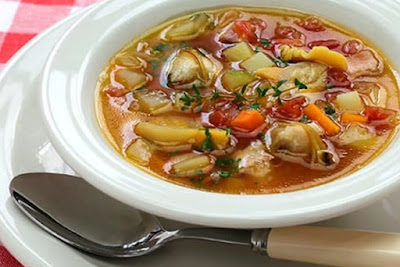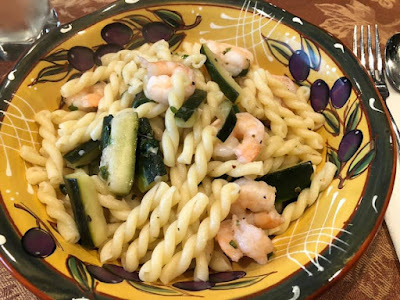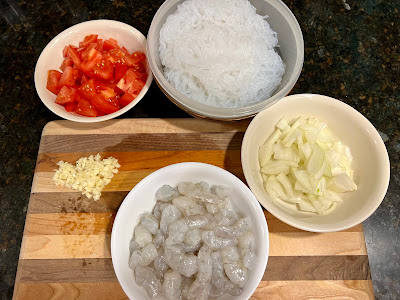Another great compilation from WebMD.
Best/Worst Seafood Dishes for Your Health
Medically Reviewed by Poonam Sachdev on
August 30, 2023
What Makes the Difference?
You’ll want to consider what’s in the dish, how it was cooked, freshness, and the type of fish. There are lots of good choices, but some are better than others. You’ll want to limit cream, oil, salt, “bad” fats, and mercury. Do you know what’s in your seafood entree?
Best: Salmon
It’s a nutritional darling that you’ll see on many U.S. menus. It’s high in healthy omega-3 fatty acids. And as a canned fish, it generally has less mercury than tuna. Wild salmon caught in Alaska is a good source, whether fresh or canned. Because fatty fish like salmon can have more of banned chemicals called PCBs, it helps if you cut away or drain extra fat, skin, and darker meat.
Worst: Fish and Chips
The fact that everything in this dish is deep-fried is not a good start. The tartar sauce and ketchup often served with it add even more fat, sugar, and calories. If you bake the fish (try it with a cornflake crust for a crunch) and potatoes, you can control the amount of oil. A simple lemon wedge is a low-calorie way to add flavor.
Have Sparingly: Broiled Swordfish
No matter how it’s caught or how you cook it, swordfish is likely to have high levels of mercury. It’s not a big deal to eat once in a while, but too much can damage your brain and kidneys. If you’re pregnant, that may hurt the baby or cause a miscarriage. Infants, the elderly, and those who have weak immune systems may be more sensitive to it. Shark, king mackerel, and tilefish from the Gulf of Mexico also have high levels of mercury.
Best: Shrimp Cocktail
It’s all about the sauce. The shrimp are usually steamed or boiled, which is pretty healthy. They’re high in protein, and low in fat and mercury. But the sauce, especially the classic bottled tomato-based type, can hide lots of sugar, sometimes listed as “high-fructose corn syrup.” So skip the dip, or make your own sugar-free version. You’ll find lots of recipes online.
Worst: New England Clam Chowder
Sure, it’s got clams, which give you protein. But this soup also has cream, butter, and salted pork. So you could get lots of calories, saturated fat, and sodium, which many people need to limit. Save this one for a special treat and try not to have too much.
Best: Manhattan Clam Chowder
Instead of butter and cream, this chowder uses a base of tomatoes. That’s a really good start. Potatoes, carrots, and onions fill out the dish. It adds up to about 135 calories a cup with little saturated fat, compared with around 181 calories a cup for the same amount of New England clam chowder. Mercury is not usually a worry with “bivalve” shellfish like mussels, oysters, and clams. Be aware that ready-to-serve soup has an estimated 1000 mg of sodium in 1 cup.
 |
Best: Salad With Anchovies
Because they’re small and don’t live that long, these fish are less likely to have mercury, PCBs, and other chemicals in their flesh. And they’re loaded with omega-3 fatty acids that your body needs to be at its best. Some packaged anchovies have a lot of salt, so check the label, especially if you have to watch your sodium. Look for white anchovies in vinegar -- “boquerones” in Spanish cuisine -- for a less-salty version.
Best: Canned Tuna
This lean fish gives you protein, and has some omega-3s. But tuna grow bigger than fish like sardines and anchovies, so they often have more mercury and other chemicals in their flesh. For lower mercury levels, look for the “canned light” kind. If you like albacore, look for products from the U.S. or Canada. If you’re watching your calories and fat, buy tuna packed in water instead of oil.
Best: Oysters
You’ll get protein and zinc, but it’s best to cook oysters, not eat them raw. That will help avoid food poisoning from bacteria like vibrio. This bacteria is more common in warmer months but can happen anytime. Hepatitis A can also be a risk with shellfish. Your oysters may be fine, but you can’t tell if it’s infected by how it looks and smells. Lemon juice, hot sauce, or alcohol won’t kill vibrio. Only thorough cooking can do that.
Best: Baked Catfish
They may not be the prettiest fish to look at, but U.S. farm-raised catfish have a lot going for them. They’re low in mercury, eco-friendly, nutritious, and easy to find in grocery stores. You may want to check on the source, since some countries don’t have strict rules about fish farming. Fried catfish is a favorite for many, but frying adds lots of calories and fat. Bake it for a leaner dish.
Best: Grilled Sardines
They’re usually canned, but you can sometimes get fresh ones at the market that are great when grilled whole. They’ve got plenty of omega-3s and not much mercury, because they’re small and short-lived. Plus, there really are lots of these fish in the sea, and they usually aren’t expensive. As with tuna, you can get them packed in water instead of oil.
Best: Ceviche
Made with raw fish, lime juice, and often potatoes and onions, this is a traditional dish from Latin America. The acid in the lime juice may seem to “cook” it because the flesh changes color. A week in the freezer at -4 F usually gets rid of parasites that could make you sick. But the size and type of fish also make a difference, so let a chef make your ceviche.
Have Sparingly: Sushi
It can be good for you, with lean protein, omega-3s, and not
a lot of fat, sugar, and calories. But there are some drawbacks. Raw fish needs
expert handling. Bacteria and parasites don’t get cooked away, but a good chef
knows how to keep you safe. And mercury in common sushi fish like ahi and
bluefin tuna can start to add up if you eat too much.
If You’re Cooking
When you’re at the market, seafood shouldn’t smell fishy.
And if you can see the fish’s eyes, they
should be clear. If the bones are a problem, you can buy fillets. Experts
recommend that you cook fish until it flakes easily with a fork. You can cook
it many ways: roast, bake, grill, or steam, to name a few. There are many
recipes to try, so cast a broad net!
Have a great week, everyone, and thank you for your support!
Blessed be… and happy cooking!
Chef Michael R


































.JPG)













